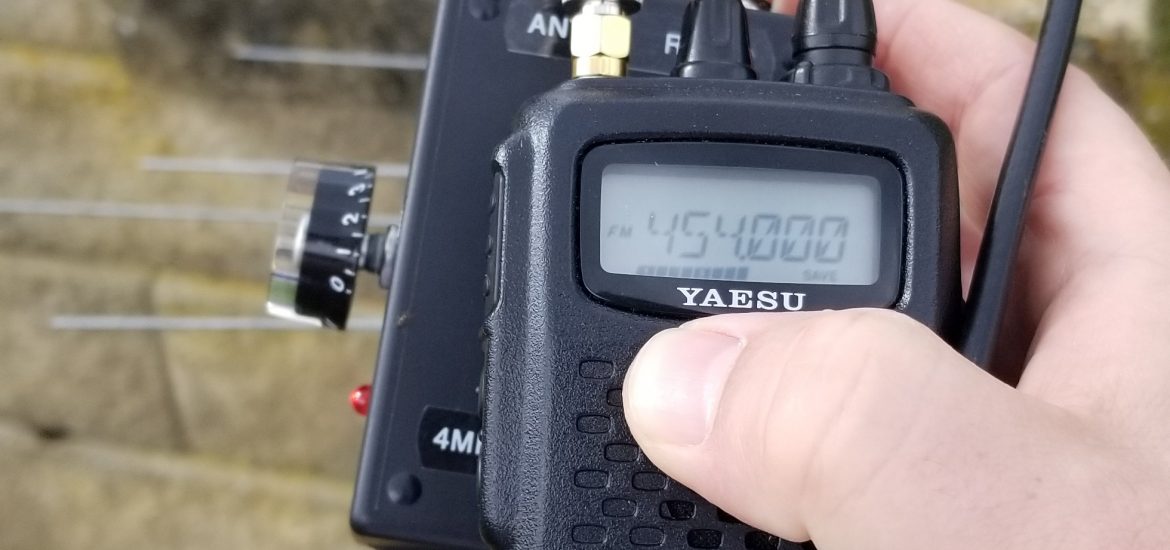Amateur Radio SPORT?
(Updated Aug 26, 2022)
Next Fox Hunt scheduled (Oct 1st 2022) in Christiansburg, VA, starting at the Country Kitchen around 9:30am. Vehicles needed. Arrive early (8:30 ish) for "pay your way" breakfast. Click for PDF of event details.
That’s right… get on your running shoes, sweat bands, and start stretching. We’re going to get you FIT while running you all over the county looking for some pesky transmitters hidden in public space while using a mixture of ham radio equipment to narrow your search. By the end you will have managed your heart rate while getting frustrated from the beeps of the fox that you swear is taunting you. You may even learn a thing or two about maps and triangulation in the process.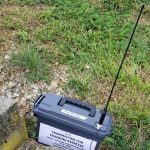
So, really? A sport? Well… that may be a stretch, but there are competitions where people actually run around the woods with antennas trying to beat each other’s times, but for the N4NRV club, it’s just a fun way to get outside, and use ham radio in a way that is fun and exciting. No need for the sweats, unless you just like wearing them.
What to expect?
 We typically like to take a Saturday morning after everyone is fed to hide a couple of transmitters (one on 2 meters band, and the other on the 70cm band) in a geographical area such as the Christiansburg corporate limits. After eating, we will gather, and go over the rules, and see if anyone has any questions. Members are encouraged to develop small teams of seasoned and new participants to encourage the elmering process.
We typically like to take a Saturday morning after everyone is fed to hide a couple of transmitters (one on 2 meters band, and the other on the 70cm band) in a geographical area such as the Christiansburg corporate limits. After eating, we will gather, and go over the rules, and see if anyone has any questions. Members are encouraged to develop small teams of seasoned and new participants to encourage the elmering process.
From the start, signals from the transmitters should be able to be picked up. Here, you will take your first measurements of the transmitter, and try to get a bearing (the compass direction) of the signal, and mark it on a map. The map can be physical, or virtual in the form of a computer, tablet, or phone application (recommendations in links below), but must allow you to get a sense of where you are, and the direction from which you will track your signal bearings.
Once the first measurement is taken, you’re off (in a vehicle) to another location to take another bearing. This is repeated until you feel comfortable enough with (what should now be) the intersections of the bearings you have been taking. Where the lines cross should close to where the transmitter is hidden!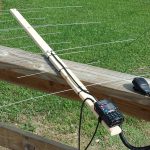
When you get close to the transmitter, things may get a little more difficult to hone in on (get closer to the signal). The transmitter signal can be so strong that it doesn’t matter where you point your antenna, you will have full strength signals showing. The signal may even be coming in on the chassis of your radio! This is when an active offset attenuator is recommended.
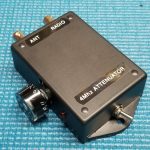 An offset attenuator allows you to offset the signal you are listening to by mixing the incoming signal with another frequency (say 4MHz). For instance, if the transmitter you are seeking is transmitting at 146.580MHz, and your offset attenuator was for 4MHz, you would add 4 to 146.580 to get 150.580MHz. When you switch on the attenuator, you switch your listening radio to 150.580 to hear the mixed signal. Now, you can vary your local 4MHz signal so the mixed signal will be more or less strong, and not have to worry about the original signal overpowering your radio. The closer you get to the transmitter, the lower you make your attenuated signal so your radio signal strength meter shows a lower signal and can be used to find the signal direction.
An offset attenuator allows you to offset the signal you are listening to by mixing the incoming signal with another frequency (say 4MHz). For instance, if the transmitter you are seeking is transmitting at 146.580MHz, and your offset attenuator was for 4MHz, you would add 4 to 146.580 to get 150.580MHz. When you switch on the attenuator, you switch your listening radio to 150.580 to hear the mixed signal. Now, you can vary your local 4MHz signal so the mixed signal will be more or less strong, and not have to worry about the original signal overpowering your radio. The closer you get to the transmitter, the lower you make your attenuated signal so your radio signal strength meter shows a lower signal and can be used to find the signal direction.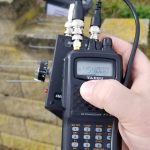
Once you find the transmitter, call it in (or whatever is required by the event), do a dance of your preference, and start looking for the next one. Hopefully, by the end, you have learned something about your skills, your equipment, and the members you searched with.
Want to try it out? Check our current calendar and announcements for the next scheduled fox hunt!
Here is a ride-along video that should give you a better feel for what could be expected (although these guys have some more advanced setups).
Recommended Equipment
- 2m/70cm FM receiver with removable/replaceable antenna, and usable signal strength meter (ie. Yaesu FT-60 HT, or Bearcat portable scanner)
- Directional antenna for bands you will be using (homebrewing is encouraged!)
- Arrow antenna – http://www.arrowantennas.com/arrowii/146-437.html
- Elk Antenna – https://elkantennas.com/product/dual-band-2m440l5-log-periodic-antenna/
- Homebrew Tape measure antenna – http://www.instructables.com/id/The-Tape-Measure-Antenna/
- Homebrew $4 Dual Band Antenna – http://qrznow.com/the-4-00-ham-radio-satellite-antenna/
- Active offset attenuator
- Prebuilt from Arrow Antenna – http://www.arrowantennas.com/main/4ofha.html
- Kit for building – (not always in stock) https://www.ebay.com/itm/Fox-Hunt-Offset-Attenuator-KIT/283961035713?hash=item421d658bc1:g:R2AAAOSwuFZca4aN
- Homebrew – http://www.homingin.com/joek0ov/offatten.html
Recommended Mapping Applications
- Apple
- FoxHunt Pro – https://itunes.apple.com/us/app/foxhunt-pro/id556391384?mt=8
- SigTrax – http://www.amcept.com/sigtrax/
- Map-N-Compass – https://itunes.apple.com/us/app/map-n-compass/id691748599?mt=8
- Android
- SigTrax – http://www.amcept.com/sigtrax/
- Triangulation – https://play.google.com/store/apps/details?id=afr.trianulation&hl=en
Other Links
- Homing-In – http://www.homingin.com/
